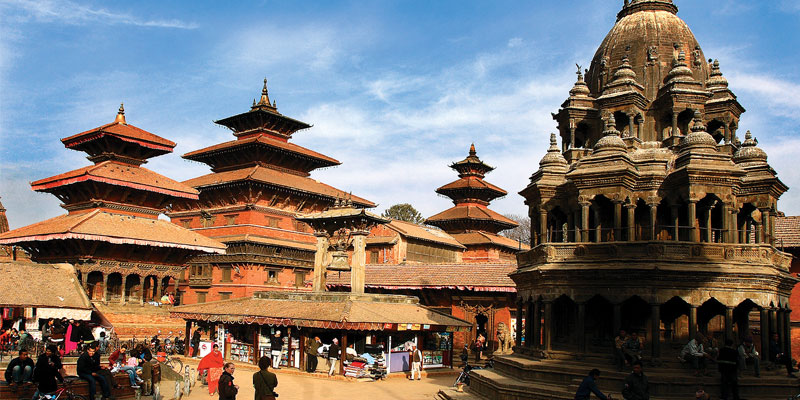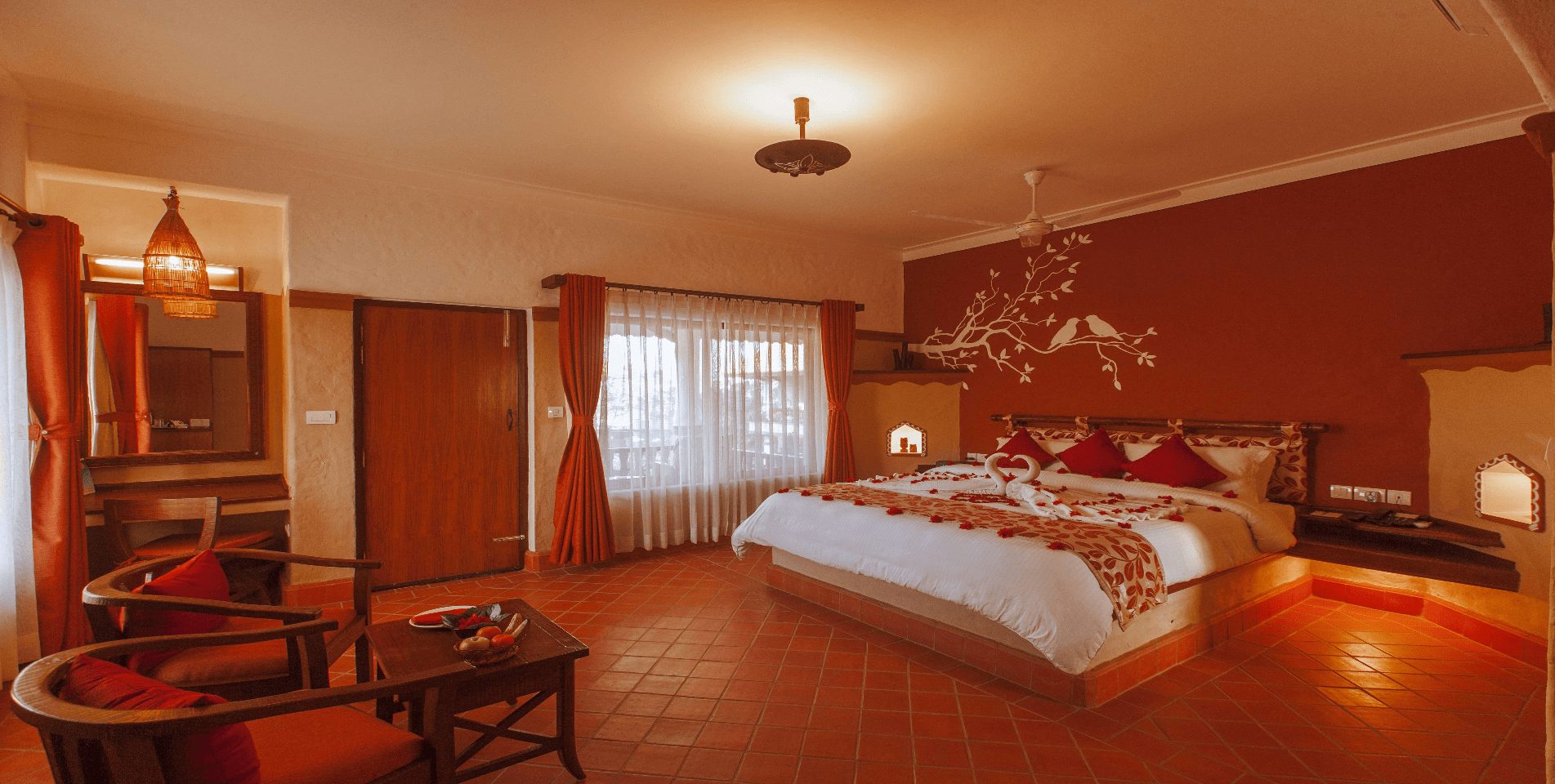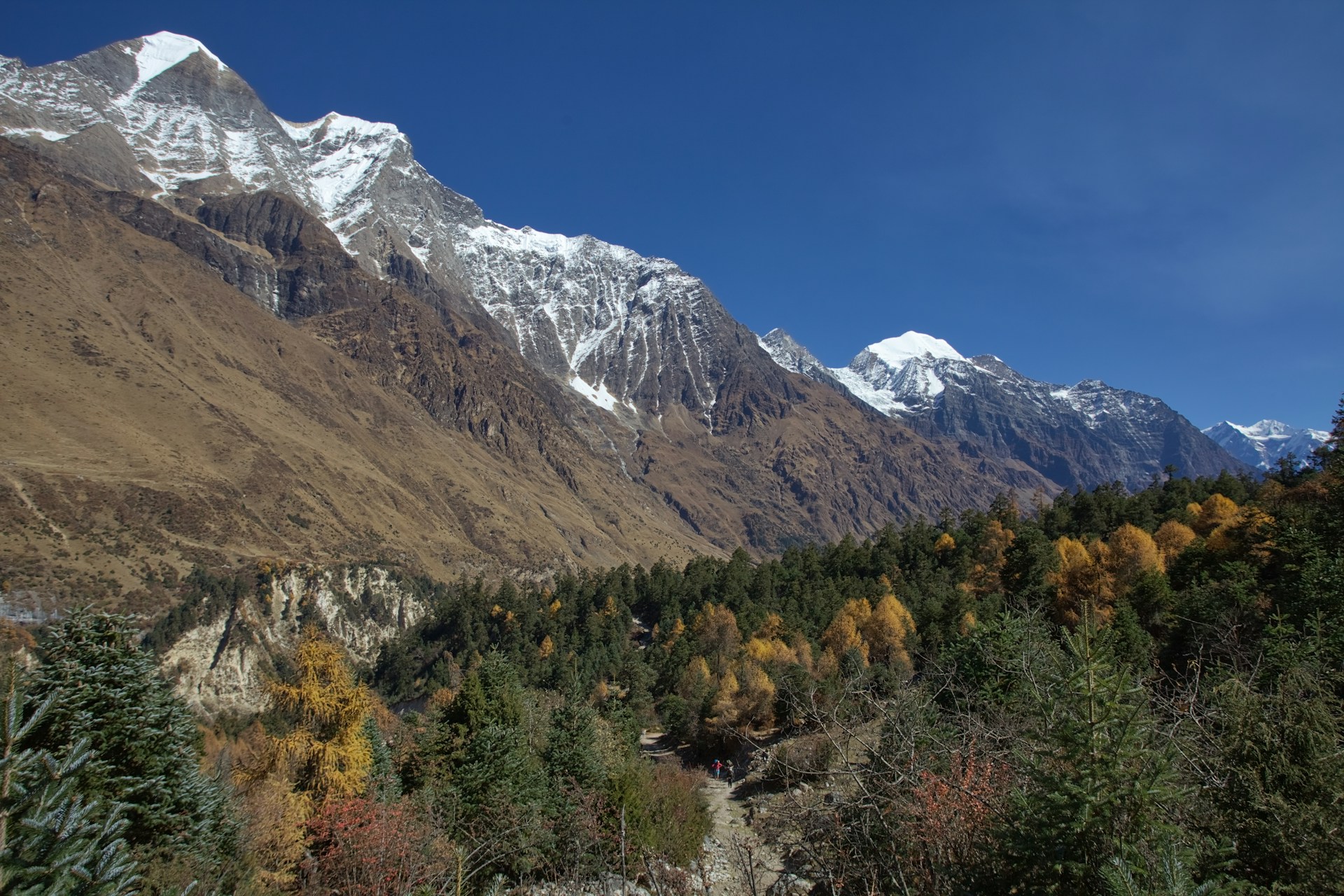Visit Kathmandu Valley: The valley of Temples, Palaces, Contrasts and Myths

There was a valley at the crossroads of ancient civilizations in Asia; a 220 square mile bowl shaped landscape and 4000 feet up in the land of Himalayas filled with water. One day a godly person or Bodhisattva (“Buddha-to-be”) named Manjushri came down from the north and cut the big hills surrounding this fertile valley to drain all the waters and create a place of settlement. This is how the history of Kathmandu valley begins. From the Gopal Dynasty believed to be settled by Lord Krishna, another supreme Hindu god to the Lichhavi Dynasty, artistic Malla Dynasty and the modern aged Shah Dynasty, Kathmandu valley has changed a lot. During this long history of Kathmandu valley, there are many developments, symbols of architectural excellence and religious influences that has left many heritages to be marveled upon by the future generations. Some of these exist in the form of temples, stupas and monasteries, while other exists in the form of palaces, mythology, cultures and tradition. You will be amazed to witness the grandeur of the heritages hosted by this medieval valley.
Architectural excellences of Temples and Palaces
In the history of Kathmandu the Lichhavi Dynasty (ruling from 4th to 9th centuries) and the Malla Dynasty (from 13th-18th century) played an important role in establishing the excellent masterpieces of architecture, most of these in the form of Temples and Palaces. What was a confederation named Nepal Mandala until 15th century went on to became three rich cities of Kathmandu, Bhaktapur and Lalitpur (Patan). The competition among these brotherly states led to the establishment of marvelous heritages, architecture and artifacts. The contribution of indigenous Newar community in flourishing the culture and unique architectural masterpieces is unrivalled.
The three cities of Kathmandu valley were each centered upon a winding and unplanned palace complex with a square filled with artistic temples having ornate carvings on their walls, the Royal Palace adjacent to the square as well as other heritages. This led to the amusing complexes we see today, in the form of Kathmandu Durbar Square, Bhaktapur Durbar Square and Patan Durbar Square. Unique Pagoda style created by the Newar community for temple is the most emblematic form, the fame of which reached even to the palace of Kublai Khan in Beijing, China.
Haven’t heard a lot of myths about Kathmandu? Here are some for you
Kathmandu has lots of myths and legendary stories that form an integral part of its culture, history and traditions. One famous myth about formation of Kathmandu valley is already discussed above.
• Worshiping The Living Goddess Kumari started when King Jaya Prakash Malla promised Goddess Taleju to select a virgin girl child from a Newari caste with 32 virtues and proclaim her the living goddess Kumari and worship her, for she herself would manifest in this child.
• An ancient house at the centre of Kathmandu Durbar Square is believed to house Lord Shiva and his consort Parvati. Legend has it that Lord Shiva, late accompanied by Parvati, used to visit Kathmandu to see the divine dances performed during the festivals.
• The Temple of Pashupatinath has a myth that the Shiva linga was found when a cowherd noticed a cow offering her milk to a mound, at a place where current temple rests. On digging the mound a great light came out from the linga where people constructed a temple dedicate to Pashupatinath, the form of Lord Shiva who protects the animals.
• Boudhanath has a myth that during the construction of this stupa, due to the lack of water, a sheet was spread on the ground to get water formed by the saturation of dew and used for construction. Twelve long years took to complete this construction. Hence this stupa is also called the stupa of a million dewdrops.
Kathmandu valley has several of such myths that are embedded in daily life, culture and tradition. You need to visit the ancient heritages of valley and discover such wonders.
Antiquity and Modernity coexist in Kathmandu
When you do the sightseeing in this culturally rich valley of Kathmandu, you can see the contracts the cities of Kathmandu, Bhaktapur and Lalitpur has to offer. You can visit the ancient temple of Pashupatinath in the same city where the modern malls are constructed to host modern entertainment activities. While some members of Newar community are seen displaying the traditional attire during the festivals other communities are seen celebrating their festivals in their own ways. Others are seen dressed in modern clothes watching these celebrations. Sounds interesting, no? Same is the case of buildings and structures. Modern structures and ancient heritages are seen side by side in this valley, a valley of contrast.
So, what are you waiting for? Come and explore the myths of this ancient valley, a valley favored by the holy deities, loved by nature and preserved by the diverse communities and religious identities. You will surely be mesmerized by the temples and palaces as well as myths and contrasts the valley is proud of.







